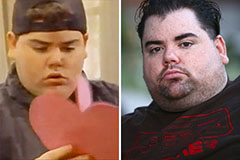How do you really feel in regards to Why sewage is coming up through your bathtub?

Sewer back-up in the bathtub can be an upsetting and unhygienic trouble for any house owner. Not only is it inconvenient, however it additionally poses major wellness threats and indicates underlying issues with the plumbing system. Comprehending why sewer is showing up via the bathtub is essential for taking ideal action to address the issue properly.
Introduction to the Problem
Common Factors for Sewer Back-up
Clogs in the Drain Line
Among the most common sources of sewer back-up is a blockage in the drain line. This can occur as a result of the accumulation of particles, oil, or international things in the pipes, preventing proper circulation and creating sewer to support into your bathtub.
Tree Root Intrusion
Tree origins seeking wetness and nutrients can infiltrate drain lines with little fractures or joints. Gradually, these roots can expand and broaden, creating significant damage to the pipes and causing sewer back-up issues.
Comprehending the Problem
When sewage draws back up into the bathtub, it's a clear indicator of a problem with the water drainage system. The wastewater that must be streaming far from your home is rather finding its way back right into your space, which can cause considerable damages and carcinogen.
Potential Reasons
A number of factors can contribute to sewer back-up in the bathtub. From blockages in the sewage system line to issues with the plumbing facilities, identifying the root cause is important for finding a remedy.
Aging Facilities
Older homes may have dated plumbing systems that are more at risk to deterioration, cracks, and deterioration. As pipes age, they become much more vulnerable to leaks and blockages, raising the chance of sewer back-up events.
Heavy Rainfall or Flooding
Throughout periods of heavy rainfall or flooding, the drain system may end up being overloaded with excess water, triggering back-ups and overflows. This can result in sewer supporting into tubs and various other components inside the home.
Indicators of Sewer Back-up
Foul Odors
Unpleasant odors originating from drains or components, particularly in the bathroom, may indicate sewer back-up concerns. These odors are commonly solid and persistent, signaling an issue that calls for instant interest.
Slow Draining Fixtures
Bathtubs, sinks, and commodes that drain gradually or not in all could be experiencing sewage backup. If numerous fixtures are influenced all at once, it's most likely that the concern originates from an usual point, such as the primary sewage system line.
Gurgling Sounds
Weird gurgling or bubbling sounds coming from drains when water is running somewhere else in your house are indicative of air trapped in the plumbing system. This air buildup can arise from sewer back-up and must be checked out immediately.
Health Dangers Associated with Sewer Backup
Contamination of Supply Of Water
Sewer backup can contaminate the water supply in your home, posturing a severe wellness danger to you and your family members. Direct exposure to polluted water can bring about gastrointestinal problems, skin infections, and various other health problems.
Mold Development
Dampness from sewer back-up can produce perfect conditions for mold development in your home. Mold and mildew spores can intensify respiratory troubles and trigger allergies in delicate people, making punctual cleaning important.
Spread of Condition
Sewage includes hazardous germs, infections, and bloodsuckers that can create a variety of illness, including liver disease, cholera, and gastroenteritis. Entering contact with sewage or contaminated surface areas puts you in jeopardy of infection.
Cleaning Up After Sewer Back-up
Disinfection Procedures
Extensively sanitize and sanitize affected areas after sewage backup to get rid of harmful germs and stop mold and mildew development. Use suitable cleansing items and safety equipment to guarantee risk-free and reliable cleaning.
Remediation of Affected Locations
Fix any type of damage to floor covering, walls, or components triggered by sewer backup. Relying on the degree of the damage, you may require to replace carpeting, drywall, or other products to restore your home to its pre-loss condition.
Immediate Actions to Take
Turning Off Water System
In case of sewer back-up, it's vital to turn off the water to stop additional contamination and damages. Locate the primary water shutoff valve in your house and closed it off till the concern can be solved.
Contacting a Professional Plumber
Managing sewage back-up is not a DIY work. Contact a licensed plumber with experience in dealing with sewage-related problems to assess the scenario and do necessary repair work or cleanups.
Staying Clear Of Contact with Polluted Water
Until the sewer back-up is resolved, stay clear of contact with polluted water to prevent the spread of germs and microorganisms. Use protective gear if you have to be in the afflicted area and clean your hands completely afterward.
Safety nets
Routine Maintenance of Sewer Lines
Set up normal examinations and upkeep of your drain lines to identify and deal with possible concerns prior to they escalate into significant troubles. This can consist of cleaning particles, examining for tree root breach, and fixing any type of damaged pipelines.
Mounting Backwater Valves
Take into consideration mounting bayou valves in your plumbing system to stop sewage from flowing back into your home throughout periods of heavy rainfall or flooding. These valves instantly close when water starts backing up, shielding your building from contamination.
Proper Disposal of Family Waste
Avoid flushing anything other than bathroom tissue and human waste down the bathroom to avoid clogs and clogs in the drain line. Dispose of grease, oil, and various other home chemicals appropriately to lessen the risk of plumbing troubles.
Why Is Water Backing Up in My Bathtub When I Flush My Toilet?
What to do about a sewer line clog
First, don’t bother with plunging. No amount of plunging will dislodge the clog in a sewer line. The clog is too far away. Plungers are for clogs in the toilet itself, not the sewer line. Plus, the most likely causes of a sewer clog are:
Tree roots Flushed toys or feminine products Grease buildup Those items don’t move easily. And in the case of tree roots, the roots need to be cut out of the pipe and the pipe will need to be repaired.
You’ll need a closet auger. A closet auger is a type of plumber’s snake with a protective cover to keep from scratching the delicate porcelain toilet. If the clog is further down, you may need to remove the toilet or use one of your cleanouts to get to the clog.
We also recommend doing a video inspection of the drain to ensure that the cause of the clog has been completely removed. Otherwise, you could have the same problem again in a few days or weeks.
https://mspplumbingheatingair.com/blog/why-is-water-backing-up-in-my-bathtub-when-i-flush-my-toilet

As a serious reader about What To Do If Sewage Starts Backing Up Into the Shower, I assumed sharing that piece of content was essential. I beg you take a moment to promote this write-up if you liked it. I am grateful for your time. Don't forget to stop by our site back soon.
Click Here
 Ralph Macchio Then & Now!
Ralph Macchio Then & Now! Michael Bower Then & Now!
Michael Bower Then & Now! Michael J. Fox Then & Now!
Michael J. Fox Then & Now! Tatyana Ali Then & Now!
Tatyana Ali Then & Now! Talia Balsam Then & Now!
Talia Balsam Then & Now!